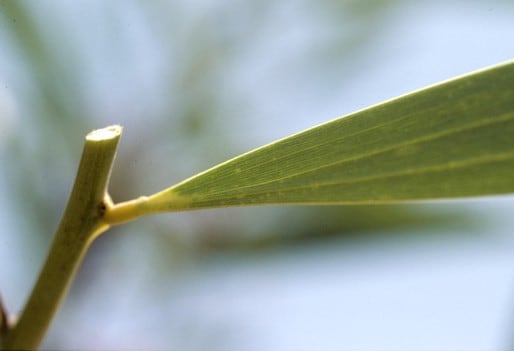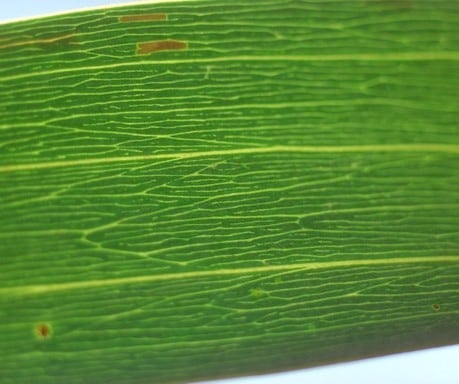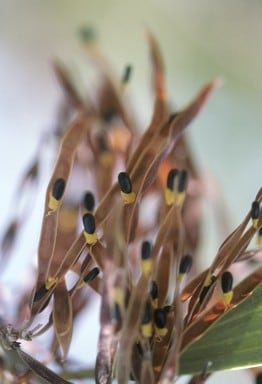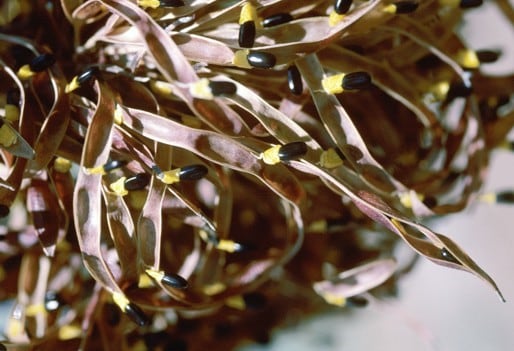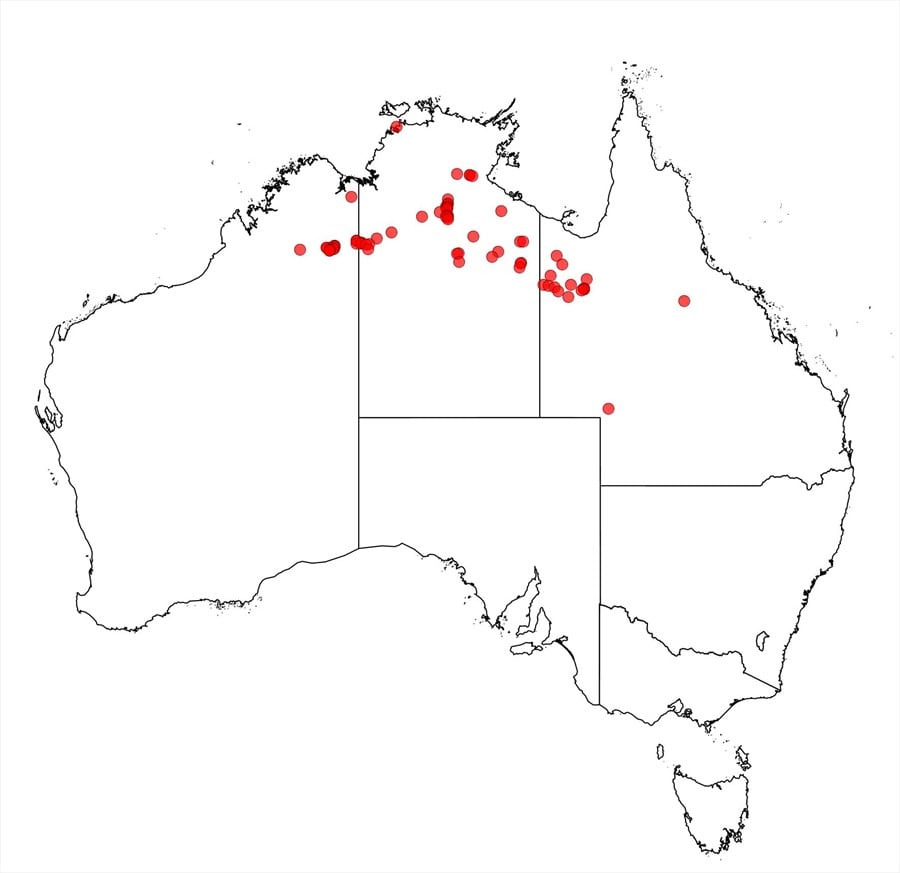Acacia thomsonii Maslin & M.McDonald
WATTLE
Acacias of Australia
Common Name
Thomson’s Wattle
Family
Fabaceae
Distribution
Discontinuous in northern Australia from near Halls Creek, W.A., through N.T. to the Mount Isa region, Qld.
Description
Often ±spindly shrub or tree 2–6 m high. New shoots encrusted with bronze or brownish resin at initiation, not viscid. Branchlets sericeous. Phyllodes patent to ascending, mostly slightly asymmetric, oblanceolate to narrowly oblong-elliptic, ±straight to shallowly falcate, 7.5–17 cm long, 10–22 mm wide, rounded-obtuse to subacute, green to grey-green, sparsely to moderately sericeous, multistriate with normally 3 nerves more evident that the rest, sparingly anastomosing; gland basal. Inflorescences rudimentary 2-headed racemes with axes to 0.5 mm long; peduncles normally 3–7 mm long and sparsely sericeous; spikes 15–30 mm long, golden; receptacle glabrous. Flowers 5-merous; sepals united to near apex, calyx tube glabrous or sparsely white-puberulous. Legumes linear, straight to shallowly curved, raised over and variably constricted between the seed, mostly 4.5–8 cm long, 3–4 (–4.5) mm wide, firmly chartaceous to thinly coriaceous, red-brown to dark brown, glabrous to subglabrous. Seeds longitudinal, ±oblong, (3–) 3.5–4 (–5) mm long, glossy, dark brown to black; aril normally bright yellow.
Habitat
Grows in usually skeletal, slightly acidic soil on dissected plateaux and rocky low hills (often along diffuse drainage lines) and stony or sandy plains.
Specimens
W.A.: Moola Bulla Stn, W of Halls Creek, C.E.Harwood 328-384 & M.McDonald (PERTH); 16 km SW of Halls Creek on Great N Hwy, B.R.Maslin 7157 (PERTH). N.T.: 2.4 km N of Dunmarra Roadhouse on Stuart Hwy, L.Thomson LXT1232A–J & K (BRI, DNA, PERTH). Qld: 35 km E of Camooweal, B.V.Gunn 2469 (PERTH).
Notes
Currently under evaluation for multipurpose use in dry areas of sub-Saharan Africa; the potential of its seeds as a source of human food is also being assessed.
A relatively invariable species formerly confused with A. cowleana. Its closest relative, however, is A. colei which differs especially by its normally pale yellow-sericeous new shoots, wider, densely sericeous, darker coloured, more obviously reticulate phyllodes, longer spikes and strongly curved (rarely coiled) pods. The two species are sometimes sympatric. Also related to A. camptocarpa (W.A.) and putatively hybridises with A. gonoclada in N.T.
A relatively short-lived species that regenerates prolifically from seed following fires and favourable rainfall. Usually produces seed precociously and in large quantities.
FOA Reference
Data derived from Flora of Australia Volumes 11A (2001), 11B (2001) and 12 (1998), products of ABRS, ©Commonwealth of Australia
Author
Minor edits by B.R.Maslin
B.R.Maslin
This identification key and fact sheets are available as a mobile application:
URL: https://apps.lucidcentral.org/wattle/
© Copyright 2018. All rights reserved.


